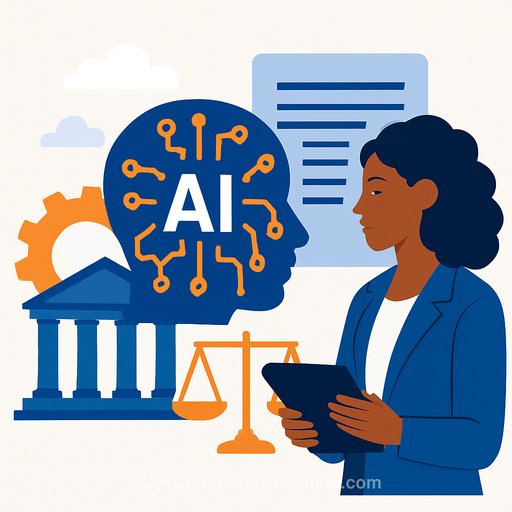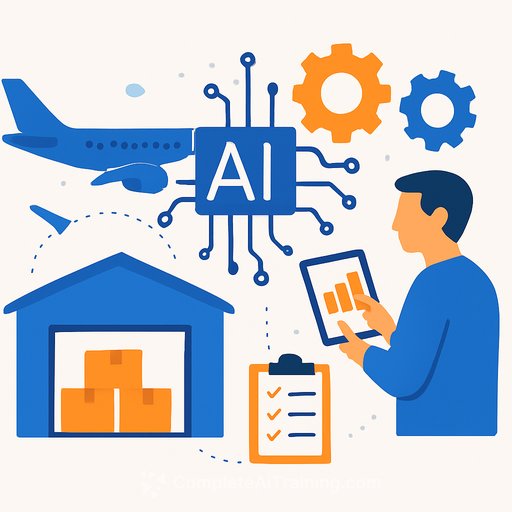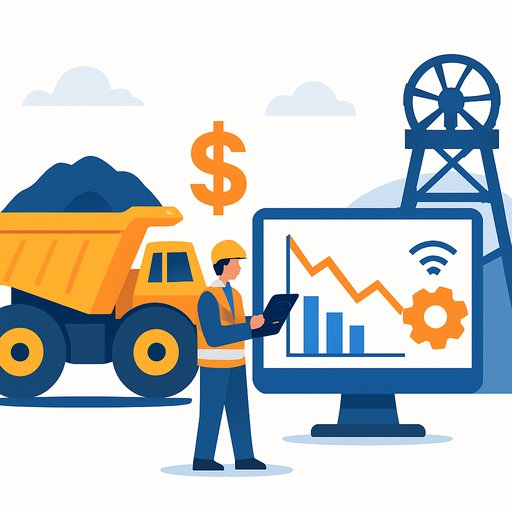AI That Actually Moves Operations
AI is a practical lever for operations teams: faster analysis, cleaner workflows, tighter decision cycles. The catch is execution-tools feel simple at first, but using them well takes structure and iteration.
The data is clear from real deployments: AI enhances and accelerates work more than it undermines it. Teams are cutting decision time from weeks to hours and moving spend, pipeline, and headcount with more confidence.
AI in Financial Operations
Google's Gemini, integrated with Google Workspace, turns Sheets and Docs into an analysis engine. Teams prompt Gemini to spot patterns and outliers, summarize statements, create charts, and rerun scenarios with new assumptions.
The result: trend detection that used to take days now takes minutes. One team identified expense lines growing ahead of forecast, acted early, and made vendor and SaaS changes worth six figures in savings-avoiding tens of thousands in delayed decisions.
- Use Gemini in Sheets to flag above-trend accounts and variance to forecast
- Prompt: "Identify top 10 outliers month-over-month, explain drivers, chart the trend, and propose 2 actions per line item"
- Rerun sensitivity scenarios in one prompt: price changes, volume shifts, contract terms
AI in Marketing Operations
Research and sequencing are where AI removes heavy lifting. Teams use multi-agent workflows (Gemini "Gems," n8n, Gumloop) to pull company data, synthesize insights, enrich CRM records, and queue outreach.
Ground the data-specify sources like Bloomberg or Dun & Bradstreet in the prompt-and attribute every external datapoint. With this approach, teams report a 40% lift in open rates, 250% higher click-through, and roughly 25% more calls booked.
- Standardize an "enrich → verify → write → schedule" pipeline
- Attribute sources inside the CRM record; reject unverifiable claims
- Generate case study drafts auto-tailored to each prospect's industry and size
AI in Recruiting
Recruiting teams run similar workflows to map competitor orgs, open roles, reviews, public salary bands, and satisfaction data. Pair that with candidate inputs to build targeted campaigns by skill and seniority.
Modern ATS platforms summarize resumes, cover letters, and screening answers, then score against your rubric. Interview notes are auto-summarized from video calls, letting teams prioritize top candidates sooner.
- Set a scoring rubric (skills, impact, culture adds) and let the ATS rank first pass
- Campaign templates per competitor: role, comp band, growth story, switch triggers
- Require human approval before outreach to protect brand and compliance
AI in Software Development
Engineering velocity jumps when AI handles boilerplate and refactors. Tools like GitHub Copilot suggest lines, functions, tests, and refactoring options so engineers focus on architecture and edge cases.
Best practice is human-in-the-loop: engineers review suggestions, run tests, and gate anything production-bound. Pair that with RAG for context-aware code, fine-tuning on client sources, and structured reasoning prompts for complex logic.
- Adopt AI pair programming for routine code and test generation
- Add RAG to bring product specs, APIs, and style guides into context
- Gate deployments: AI proposes, humans approve, CI validates
Retooling Skillsets for Ops
Specialists still matter, but the standout operators bridge tech and the business. They frame problems clearly, speak data, and can prompt AI like they brief a teammate.
The core skill is problem definition. Spend more time on the question and constraints; let AI compress the "how." That's how ideas turn into outcomes fast.
- Problem framing: objective, constraints, decision owner, deadline
- Prompting: role, inputs, steps, acceptance criteria, output format
- Data grounding: source lists, confidence thresholds, citation rules
- Evaluation: spot-checks, benchmarks, and red-team prompts
- Light automation: n8n/Zapier, API basics, CSV/Sheets fluency
AI Risks and the Guardrails That Matter
The biggest risks: trusting unvalidated outputs and leaking confidential data. Untrusted sources, hallucinations, and overly broad permissions can create expensive mistakes.
Keep a human controlling the strings. When teams supervise prompts, sources, and actions, outcomes become consistent, auditable, and safer.
Minimal governance stack for operations
- Data policy: what's allowed in prompts; use redacted fields by default
- Source policy: approved source list; cite or discard
- Access control: keep automations least-privileged; review connected apps monthly
- Approval steps: AI drafts, humans approve, systems execute
- Logging: store prompts, versions, and outputs for audits and learning
- Evaluation: weekly spot-checks; track precision/recall on key tasks
Headcount Planning With Eyes Open
AI is pushing headcount down across support, translation, writing, data entry, and legal research. Expect to do more with leaner teams.
In practice, this can mean consolidating three junior roles into one senior operator who can run AI-enabled workflows-or removing roles that no longer meet ROI. Plan the org, don't let it drift.
The Wrap-Up
AI isn't a silver bullet, and it shouldn't run unsupervised. Used with discipline, it speeds up analysis, improves focus, and helps operations teams make better calls faster.
- Start with finance and recruiting-clear ROI, measurable wins
- Codify prompts, sources, and approvals; turn wins into SOPs
- Invest in the generalist skillset that connects tools to business outcomes
If you want structured upskilling paths, explore AI courses by job and curated AI tools for finance operations.
Your membership also unlocks:






